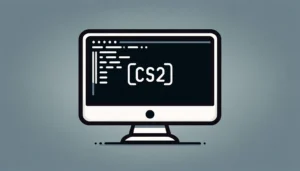Counter-Strike 2, as a competitive first-person shooter, demands not just skill and strategy but also a hardware setup that can deliver the lowest possible latency to enhance gameplay. NVIDIA Reflex is a revolutionary technology designed to reduce system latency and improve the responsiveness of games on NVIDIA GPUs, including the latest titles like Counter-Strike 2. In this part of the blog post, we will be discussing what NVIDIA Reflex is, how important it is in gaming, and generally how it changes the playing experience in Counter-Strike 2.
Introduction to NVIDIA Reflex and Its Role in Counter-Strike 2
In this part of the blog post, we will be discussing what NVIDIA Reflex is, how important it is in gaming, and generally how it changes the playing experience in Counter-Strike 2.
Understanding NVIDIA Reflex
NVIDIA Reflex is a suite of technologies and features that optimize and measure system latency in competitive games. System latency, often referred to as “input lag,” is the time it takes from clicking your mouse or pressing a key to seeing the action reflected on your screen. In fast-paced games like Counter-Strike 2, where every millisecond counts, reducing this delay is crucial to staying competitive.
How does NVIDIA Reflex work?
Reflex achieves lower latency by integrating deeply with the game engine to reduce and measure the queue of frames between the GPU and the display. It synchronizes the CPU and GPU to minimize their processing queue, which is essential when the system is GPU-bound. This synchronization helps in emptying the render queue and reduces the lag from the moment an input is made to the moment it is displayed on the screen.
Activating NVIDIA Reflex in Counter-Strike 2
To enable NVIDIA Reflex, players would simply have to enable it in the game settings. Below are simplified steps on how a player would enable NVIDIA Reflex on Counter-Strike 2:
- Launch Counter-Strike 2.
- Navigate to ‘Settings’ and then to ‘Video’.
- Go to ‘Advanced Video’ settings.
- Set ‘NVIDIA Reflex Low Latency’ to “Enabled”.
- For even lower latency, select “Enabled + Boost”, though this may slightly reduce frame rates and increase power consumption.

By enabling NVIDIA Reflex, players will notice a significant decrease in system latency, which can be the edge needed in high-stakes matches.
The Impact of Latency on Gameplay
Latency affects gameplay by delaying the actions a player sees on the screen after inputs. For example, in a scenario where two players encounter each other at the same time, the one with lower system latency is likely to react faster, giving them what is known as “Peeker’s advantage.” Lower latency also means more consistent aiming and an overall smoother gameplay experience.
Latency Types
The two important kinds of latency relevance in online gaming include:
- Network Latency: This involves the delay in the data transmission between your system and the game server. It is influenced by your internet connection and geographical distance from the server.
- System Latency: This covers the entire end-to-end response time within your gaming setup, from peripheral inputs, through PC processing, to display output.
In the context of Counter-Strike 2, NVIDIA Reflex specifically addresses system latency, offering players a more immediate and accurate interaction with the game environment.
Advanced NVIDIA Settings and Performance Optimization for Counter-Strike 2
In the competitive game like Counter-Strike 2, optimizing your NVIDIA settings is key to achieving both visual clarity and the lowest possible latency. This section focuses on the best NVIDIA settings adjustments, performance enhancements, and how to measure and interpret system latency effectively.
Optimizing NVIDIA Settings for Lower Latency
To optimize your gaming setup for the lowest system latency and best performance in Counter-Strike 2, it is crucial to adjust your NVIDIA Control Panel settings. Here are the most impactful settings:
- Image Scaling and Sharpening
Image Scaling: Turn off image scaling to prevent any additional processing that could increase latency.
Sharpening: Reduce or turn off sharpening as it requires GPU resources and can marginally increase latency. - Low Latency Mode
Set the ‘Low Latency Mode’ to “On” or ‘Ultra’ to minimize latency. This setting is particularly useful when your GPU is working with high workloads. - Power Management
Choose ‘Prefer Maximum Performance’ under Power Management Mode to ensure your GPU runs at peak efficiency during gaming sessions. - Vertical Sync (V-SYNC)
Disable V-SYNC to eliminate the delay caused by frame rate synchronization, which can contribute to system latency.
Players can find these settings in NVIDIA Control Panel under 3D settings. On our website you can search for players with NVIDIA settings included.
Accessing NVIDIA 3D Settings
To begin adjusting your 3D settings, right-click on your desktop and select NVIDIA Control Panel. Navigate to the “Manage 3D settings” tab, where you can configure the global settings or program-specific settings for Counter-Strike 2.
Detailed NVIDIA 3D Settings
Based on collected settings of pro players we recommend these NVIDIA 3D settings:

- Image Scaling
Is a driver-based spatial upscaler and sharpener for GeForce GPUs for all games.
Turn off. - Ambient Occlusion
Enhances depth perception by adding shadows around objects. It can make the game look more realistic but may reduce FPS.
Turn off for maximum performance. - Anisotropic Filtering
Improves the clarity and crispness of textures that are viewed at an angle.
Set to “Application-controlled” to let the game decide, or off for better performance. - Antialiasing – FXAA
A fast form of antialiasing that smooths out jagged edges.
Turn off to boost FPS, as it can slightly blur textures. - Antialiasing – Gamma Correction
Ensures that antialiasing includes light and shade models.
Keep on if using other antialiasing methods (it is close to 50/50 based on shared NVIDIA settings by pro players) - Antialiasing – Mode
Allows you to choose how antialiasing is applied, whether via NVIDIA settings or application-controlled.
Set to “Application-controlled” to allow Counter-Strike 2 to manage antialiasing. - Antialiasing – Setting
Specifies the level of antialiasing used.
Best left “None” or set to “Application-controlled”. (it is close to 50/50 based on shared NVIDIA settings by pro players) - Antialiasing – Transparency
Smooths out edges of textures with transparency.
Turn off for an FPS boost, especially in fast-paced games. - Background Application Max Frame Rate
Background application max frame rate sets the maximum frame rate that the GPU will render for any game or 3D application that is running in the background. This will help in reducing power consumption or fan noise in the instance where one switches to an application while another game or application is running in the background.
Turn off. - CUDA – GPUs
Select which GPUs are used for CUDA applications.
Select “All” to maximize performance if you have multiple NVIDIA cards.

- DSR – Factors
Allows higher resolutions than your monitor supports for a clearer image when downscaled.
Keep off unless you need higher resolution clarity, as it can significantly impact performance. - DSR – Smoothness
Higher levels of smoothness will further reduce the appearance of any jagged edges, but may introduce an unacceptable level of blur.
Turn off. - Low Latency Mode
Reduces latency by limiting the number of frames the CPU can prepare before the frames are processed by the GPU.
Set to “Ultra” for the lowest latency. (Pro players use different options here: 35% On, 35% Off, 30% Ultra) - Max Frame Rate
Limits the maximum frame rate. Useful for reducing power consumption and heat when high FPS is unnecessary.
Leave Off. - Multi-Frame Sampled AA (MFAA)
Increases antialiasing performance by alternating sample patterns.
Turn off for maximum performance in competitive settings. - OpenGL Rendering GPU
Selects which GPU is used for OpenGL applications.
Set to your primary NVIDIA GPU. - Power Management Mode
Controls how the GPU manages power consumption versus performance.
Set to “Prefer Maximum Performance” to ensure the GPU does not downclock under load. - Preferred Refresh Rate Monitor lets you override the refresh rate limitations imposed by the 3D application for the indicated monitor.
- Application-controlled: Let the 3D application decide the optimum refresh rate.
- Highest Available: Override the 3D application’s setting with the highest available refresh rate to take advantage of high refresh rate displays and to enhance image quality.
Set to “Highest Available”
- Shader Cache
Stores shader programs on a disk cache to decrease load times.
Enable for faster game loading. (Most of pro players use “Unlimited” then “100GB” then “On” and “Driver Default”)

- Texture Filtering – Anisotropic Sample Optimization
Optimizes anisotropic filtering performance by reducing sample rates.
Turn on for performance, off for better texture quality. (All pro players have set it “On”) - Texture Filtering – Negative LOD Bias
Allows textures to maintain high detail at a distance.
Set to “Allow” for better texture quality. - Texture Filtering – Quality
Balances performance and texture quality.
Set to “High Performance” for competitive gaming. - Texture Filtering – Trilinear Optimization
Optimizes trilinear filtering for performance.
Turn on to enhance performance. - Threaded Optimization
Utilizes multiple CPU cores for better performance in games that support multi-threading.
Set to “Auto” to allow NVIDIA to manage multi-threading. (Pro players use “On” or “Auto” 50/50) - Triple Buffering
Used with V-SYNC, allows a third frame to be queued in the buffer.
Turn off unless you are using V-SYNC. - Vertical Sync
Syncs the game’s frame rate with the monitor’s refresh rate to prevent screen tearing.
Turn off to reduce input lag, unless screen tearing is a significant issue. - Virtual Reality pre-rendered frames Cpu prepares it while gpu renders previous frame. 1 was for least input lag
Set to “1” - Vulkan/OpenGL Present Method
Turn “Auto”
Here you can check NVIDIA Control Panel Settings from m0NESY, one of the best CS2 AWP player:
This is how the fastest player in Counter-Strike sets up his nvidia settings 👀
— ESL Counter-Strike (@ESLCS) April 25, 2024
Take notes from @G2m0NESY 🖊️ pic.twitter.com/DzYErI3NAb
Advanced Video Settings in Game
Adjusting the in-game video settings of Counter-Strike 2 can also affect performance and latency:
- Texture Quality: Lower the texture quality to reduce GPU load, allowing faster processing times.
- Shadow Quality: Decrease shadow quality as rendering shadows is resource-intensive.
- Effect Detail: Lowering effect detail can improve frame rate without significantly impacting visual quality.
Measuring and Analyzing Latency
Understanding how to measure latency and interpret the results is crucial for further optimization:
Tools for Measuring Latency
GeForce Experience’s Performance Overlay: Enable this in-game overlay to view real-time statistics including FPS and latency.
Reflex Latency Analyzer: This tool provides detailed insights into system latency and helps identify bottlenecks.
FrameView: Another NVIDIA tool that allows for comprehensive performance monitoring, including frame rates and rendering latency.
Analyzing the Results
Compare the latency readings with Reflex ON and OFF to see the impact of NVIDIA Reflex.
Use the insights to adjust settings incrementally and test their effects on latency.
Latency Reduction Techniques
Here are some additional tips to reduce latency:
- Increase Mouse Polling Rate: Set your mouse polling rate to the highest possible (usually 1000Hz) to ensure quicker registration of inputs.
- Monitor Settings: Set your monitor to the highest refresh rate and activate G-SYNC if available, to reduce display latency.
Further Hardware Considerations
For those looking to push their setups even further:
- Upgrading Hardware: Consider upgrading your GPU, CPU, or RAM if you find that your current hardware is consistently hitting its limits as indicated by high game and render latencies.
- Optimizing Network Settings: While system latency focuses on your local setup, ensuring your network settings are optimized can also help reduce overall game latency.
NVIDIA Technologies and Software Tweaks for Optimal Performance in Counter-Strike 2
The final part of our guide focuses on additional NVIDIA technologies and software adjustments that can enhance your gaming performance in Counter-Strike 2. By applying these tips, you can fine-tune your system to achieve the best balance of visuals and performance, ensuring a seamless and responsive gaming experience.
Utilizing NVIDIA Technologies
NVIDIA offers several technologies that can be leveraged to boost gaming performance and reduce latency:
- G-SYNC
For monitors equipped with NVIDIA G-SYNC, ensure it is enabled to synchronize the display’s refresh rate with the GPU’s frame rate. This eliminates screen tearing and minimizes stutter, providing a smoother gaming experience without the latency penalty associated with traditional V-SYNC. - NVIDIA Ultra Low Motion Blur (ULMB)
If your monitor supports ULMB, consider enabling this feature during fast-paced games like Counter-Strike 2. ULMB can reduce motion blur and ghosting, which helps in spotting and reacting to movements quicker. - Overclocking with NVIDIA GeForce Experience
Use the automatic overclocking feature in GeForce Experience to safely enhance your GPU’s performance. This can lead to better frame rates and reduced rendering latency, which are crucial in competitive gaming environments.
Software Tweaks for Enhanced Performance
Apart from hardware settings, certain software adjustments can also significantly impact performance:
- Adjusting Windows Settings
Game Mode: Ensure Windows Game Mode is on, which can help by prioritizing game processes to reduce latency.
Graphics Settings: In Windows Graphics Settings, set Counter-Strike 2 to “High Performance” to allocate maximum GPU resources to the game. - Streamlining Background Processes
Minimize the number of running background applications while gaming to free up resources and ensure that the majority of your hardware capabilities are focused on Counter-Strike 2. - Updating Drivers and Software
Regularly update your GPU drivers through the NVIDIA GeForce Experience to ensure you have the latest optimizations and enhancements for the newest games, including Counter-Strike 2.
Practical Tips for Everyday Gaming
To maintain optimal performance, consider these daily practices:
- Regularly Monitor Performance: Keep an eye on your system’s performance stats using tools like FrameView or the GeForce Experience overlay. This will help you understand when changes are having a positive effect and when further tweaks are needed.
- Experiment with Settings: There is no one-size-fits-all setting for every system configuration and game. Experiment with different configurations to find what works best for your specific setup.
Further Research and Community Engagement
Stay informed about the latest developments by engaging with the NVIDIA and Counter-Strike communities:
- Follow Updates: NVIDIA regularly releases new drivers and software updates that can improve performance or introduce new features.
- Community Forums: Engage with other players and tech enthusiasts on platforms like Reddit, NVIDIA forums, and gaming communities to share tips, tricks, and get advice on specific issues.
Optimizing your NVIDIA settings for Counter-Strike 2 can significantly enhance your gaming experience by reducing latency and improving frame rates. By understanding and utilizing the advanced features offered by NVIDIA, and making thoughtful adjustments to both hardware and software, you can ensure that your system is finely tuned for competitive play.
Leveraging the latest technologies and staying up-to-date with new developments will keep you ahead in the game, providing the best possible performance and giving you the competitive edge needed to excel in Counter-Strike 2. Remember, each adjustment can help shave milliseconds off your system latency, which could be the difference between winning and losing in this highly competitive environment.



